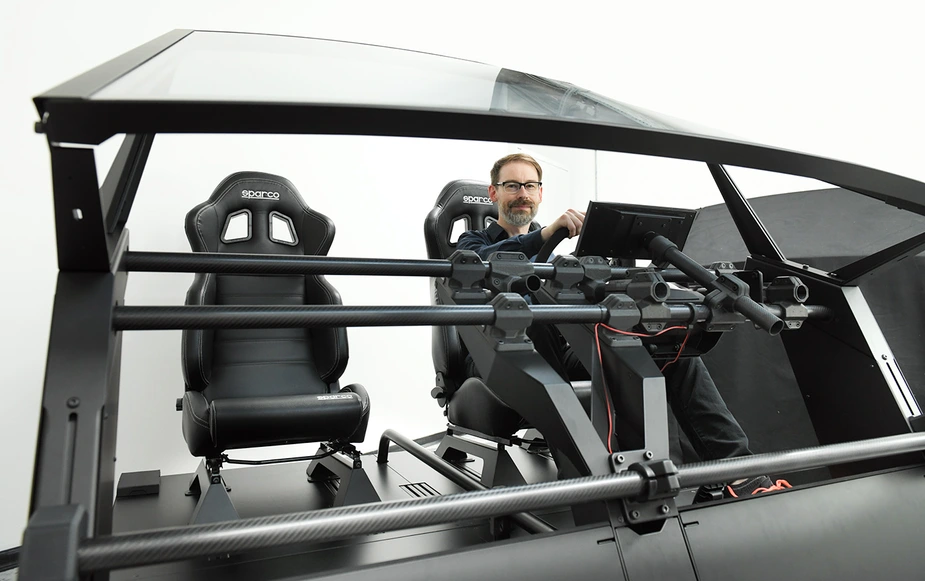Designing the future
Sven Bauer builds ‘experience models’ in Adlershof
Two comfortable car seats, a steering wheel, a front window, brakes and an accelerator. Wheels are all that’s missing. This particular vehicle, however, won’t need them. Its route is purely virtual. What it does need is the small rectangular display and the electric motor that sit behind the wheel.
‘We designed and built the whole thing,’ says Sven Bauer. Looking at the chassis made of black laser-cut metal and flush-mounted components, the way he says ‘thing’ almost feels disrespectful. The machine sits in a window-less laboratory on the first floor of the ‘amoeba’, the Centre for Photonics and Optics in Adlershof. Bauer calls his company’s products ‘experience models.’ Mirai Media Lab builds ‘technical products that enable our customers to test their visions in real life.’
His customers most often work in the design departments of large corporations and use Bauer’s interactive prototypes to test their design and interface concepts early on during the design phase. The display behind the simulator’s steering wheel, for example, can be used to try out early drafts of novel dashboard designs. ‘How can we make visions tangible? How can designers test the usability of their ideas?’ These are but two questions that Mirai provides answers to.
There is more: ‘If an idea is well-made, we’ll also make sure it is showcased properly.’ In Bauer’s opinion, taking on a design also includes adequate presentation at trade fairs and expos: ‘Selling good ideas well,’ as he puts it. Even without wheels, the ‘automotive experience model’ stored at the company headquarters has travelled the world and has been showcased at a consumer electronic trade fair in Las Vegas.
Design, novel products, and daring visions have always fascinated Bauer. Even at school in his native Bodenheim, the now 45-year-old was involved in programming commercial computer games and contributed graphics and music. In the early 2000s, he followed up on this and studied media design at the university of applied sciences in Mainz, where he graduated with a thesis on ‘generative design systems.’ He went on teaching in that field for two years in nearby Wiesbaden. He has now been living in Berlin since 2006, where he founded his own company six years later.
In 2017, he moved it to Adlershof. The site’s overall conditions, having studios and workshops on the same floor, and nearby Humboldt-Universität make up the site’s unique appeal. ‘We’re not a classic research institution,’ he says. ‘We have a playful way of working with technology. However, we are always open to new input and new inspiration.’ This is formative for Mirai’s company culture: ‘Mirai’ is the Japanese word for ‘future.’
When he is not working, he admits to an affinity to the past. He collects and restores personal computing classics from the eighties and nineties – the prehistoric digital age.
By Winfried Dolderer for Adlershof Journal
